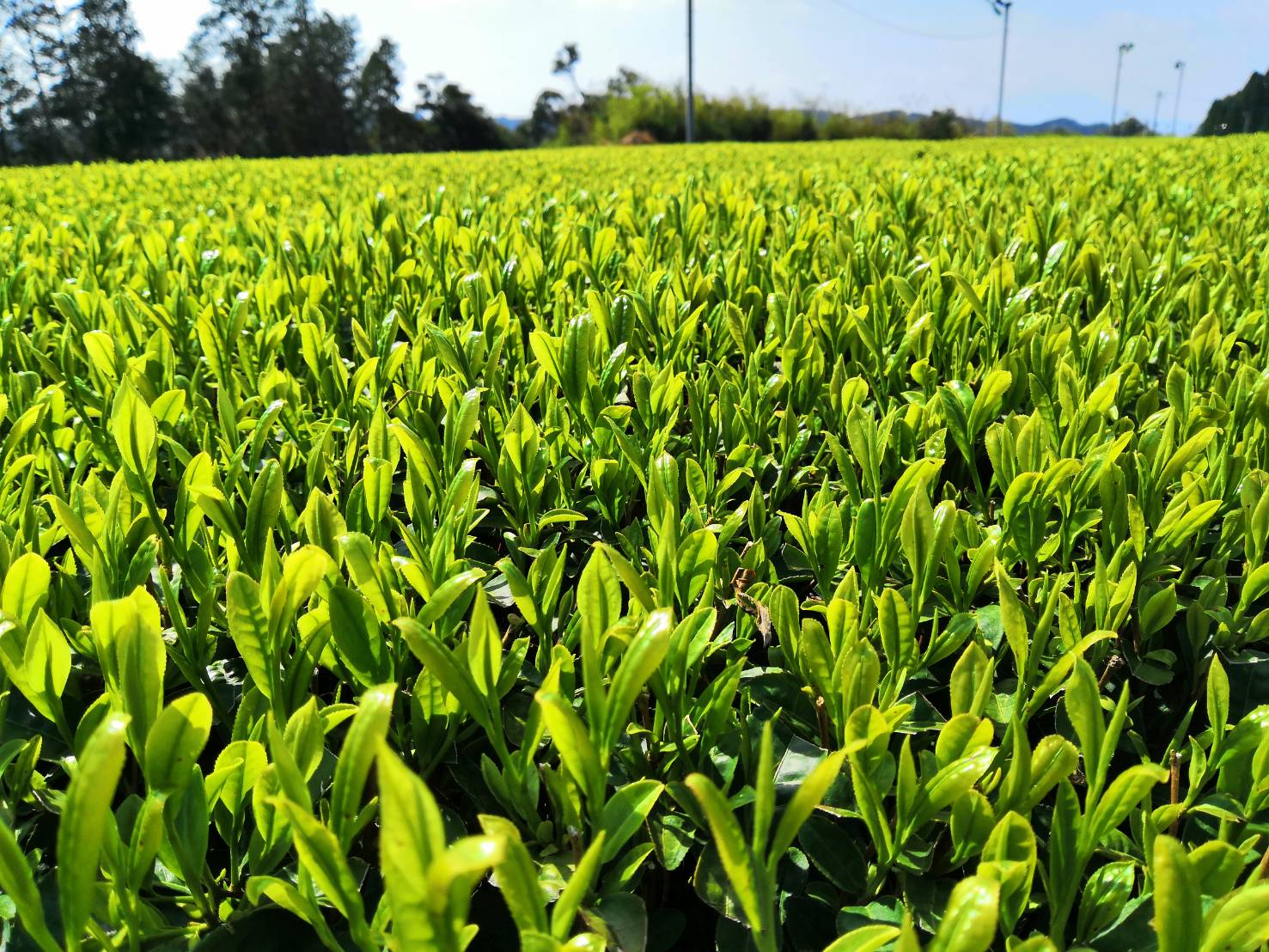
Day Two in the Tea Fields: Battling Fallen Leaves and Discovering the Secret of ‘Shading’
It’s my second day working in the tea fields, and my hands and back are still recovering from the first day’s ordeal. Yet, despite my aches, curiosity drives me forward.
As I arrive at the field, I notice tiny new buds poking out. Each tea branch proudly displays three or four bright green leaves.
“Is harvest time approaching?” I asked, hopeful.
A worker nearby smiled and shook her head.
“We’re not there yet! First, we’ll cover these bushes with a black mesh called ‘Kanreisha’—it’s called shading.”
I leaned in, fascinated.
She explained further: “When we put the shade cloth over the tea bushes, it reduces sunlight exposure. This slows photosynthesis, causing the leaves to produce more chlorophyll. The result is a deeper, vibrant green leaf with less catechins (the bitter compounds) and more amino acids like theanine, which gives the tea its sweetness and umami flavor.”
Suddenly, it made sense. This technique, known as shading, is why matcha and gyokuro teas have such vivid color and sweetness.
Today’s task, however, was slightly different from the weeding last time: removing fallen leaves from the tea bushes.
Nearby mountains are covered in cedar trees, and whenever a breeze blows, dead cedar leaves land on the tea bushes. If these leaves aren’t removed, they’ll be harvested along with the tea leaves, causing contamination issues.
“For Sencha teas,” another worker explained, “machines can easily sort out leaves and impurities. But this field is dedicated to producing ‘Tencha’—the raw leaves used to make Matcha. Tencha processing is different; impurities like cedar leaves aren’t easily removed. Contaminated batches could lead to complaints from buyers, or worse, rejection.”
From 8 AM to noon, I tirelessly removed leaf after leaf. By the end, the bushes I had cleared looked immaculate. But I knew the wind would inevitably blow again, making my efforts feel fleeting.
Working so closely with nature reminded me how unpredictable and demanding this job truly is. The timing of shading, harvesting, and processing varies year by year. It requires decades of experience and intuition.
Today was yet another powerful lesson:
Behind every perfect cup of tea lies meticulous, relentless labor—and infinite patience.


Comments